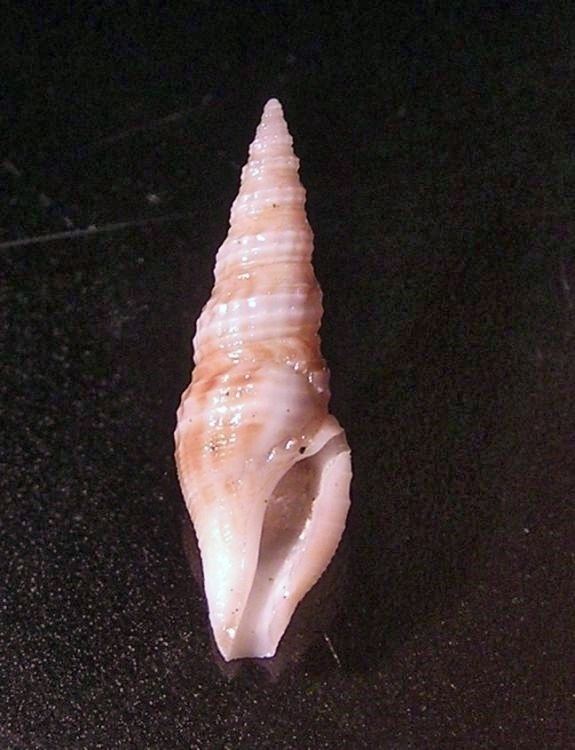Scientific name Drilliidae Rank Family | Clade Hypsogastropoda | |
 | ||
Similar Pseudomelatomidae, Borsoniidae, Clavatulidae, Turrid, Raphitomidae | ||
The Drilliidae are a taxonomic family of small predatory sea snails with high-spired shells. They are classified as marine gastropod mollusks in the superfamily Conoidea.
Contents
This family has no subfamilies.
Description
The shell is claviform with a tall spire, or squatly conical to biconical. In many species, the siphonal canal is truncated. The aperture is U-shaped with a parietal callus pad.
The sculpture of the shell shows prominent axial ribs with a polished surface. Most species have a dorsal varix (transverse elevation), except in the genera Cymatosyrinx, Elaeocyma and Splendrillia. The protoconch can be smooth or very carinate. The ovate operculum has a terminal nucleus.
The radula of the species in this family have characteristically five teeth in each row (formula : 1 + 1 + 1 + 1 + 1) with a vestigial central tooth, comb-like lateral teeth and a pair of flat-pointed, slender marginal teeth.
The foregut structure of the anterior alimentary system has the least derived foregut anatomy of all the families in the superfamily Conoidea.
Taxonomic history
The genera in this family were originally separated from the subfamily Clavitulinae and classified by H.& A. Adams (1858) under subfamily Turritinae, because their operculum has a terminal instead of a central nucleus. In 1942, the species with a U-shaped sinus and a parietal callus pad were brought by Powell in the new subfamily Clavinae. In 1966, Morrison proposed the subfamily Drillinae ( = Clavinae) for the species with a stenoglossan radula with comb-like lateral teeth. Finally, in 1993, Taylor et al. proposed the promotion of Drillinae from subfamily to the family level Drilliidae.
Taxonomy
Genera in the family Drilliidae include:
